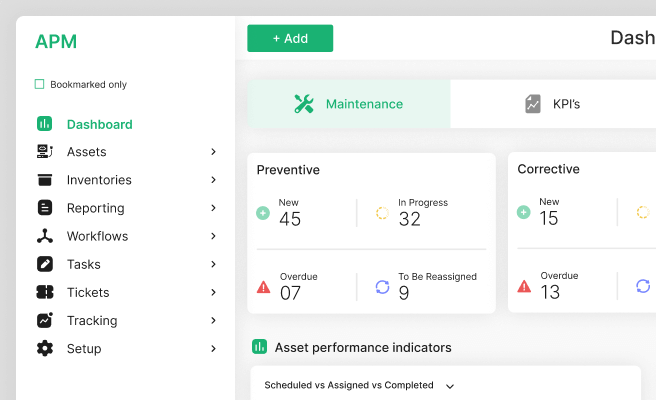Customer Feedback
<p>Customer feedback refers to the insights, opinions, and information provided by clients or users about their experience with a product or service. It's a critical component for any business aiming to improve its offerings, understand customer needs, and enhance overall user satisfaction. Incorporating customer feedback allows companies to make informed decisions, fostering growth and long-term success.</p>
<p>Historically, businesses have used various methods to gather feedback, such as suggestion boxes, surveys, and direct interviews. Today, with the advent of digital technology, collecting feedback has become more streamlined and efficient. Tools like <a style="color: #2896FF; text-decoration: underline;" href="https://www.surveymonkey.com">SurveyMonkey</a> and <a style="color: #2896FF; text-decoration: underline;" href="https://www.typeform.com">Typeform</a> enable companies to create comprehensive surveys easily, reaching a broader audience in less time.</p>
<h2 id="importance">Importance of Customer Feedback</h2>
<p>Customer feedback is vital for several reasons:</p>
<ul>
<li>It helps identify areas of improvement by highlighting pain points and issues faced by customers.</li>
<li>It drives innovation by providing ideas and suggestions directly from the user base.</li>
<li>It enhances customer satisfaction by showing clients that their opinions are valued and considered.</li>
<li>It aids in tracking customer sentiment over time, helping businesses stay aligned with market needs.</li>
</ul>
<h2 id="types">Types of Customer Feedback</h2>
<p>There are various types of customer feedback, including:</p>
<ul>
<li><b>Direct Feedback:</b> This includes direct communication from customers through emails, phone calls, or face-to-face interactions.</li>
<li><b>Indirect Feedback:</b> This involves analyzing user behavior and data from analytics tools to infer customer satisfaction and issues.</li>
<li><b>Solicited Feedback:</b> Feedback obtained through structured methods like surveys and questionnaires.</li>
<li><b>Unsolicited Feedback:</b> Spontaneous feedback provided by customers through reviews, social media, or other channels.</li>
</ul>
<h2 id="tools">Tools for Gathering Customer Feedback</h2>
<p>Several tools can help businesses gather and analyze customer feedback effectively:</p>
<ul>
<li><a style="color: #2896FF; text-decoration: underline;" href="https://www.usertesting.com">UserTesting</a>: This platform allows businesses to capture video feedback from real users interacting with their products.</li>
<li><a style="color: #2896FF; text-decoration: underline;" href="https://www.qualtrics.com">Qualtrics</a>: A robust survey tool that helps in gathering detailed customer insights.</li>
<li><a style="color: #2896FF; text-decoration: underline;" href="https://www.google.com/analytics">Google Analytics</a>: Provides indirect feedback by analyzing user behavior on websites and applications.</li>
<li><a style="color: #2896FF; text-decoration: underline;" href="https://www.hubspot.com">HubSpot</a>: Offers tools for collecting feedback through NPS surveys, customer satisfaction surveys, and more.</li>
</ul>
<h2 id="examples">Real-World Examples</h2>
<p>Many companies have successfully leveraged customer feedback to improve their products and services. For instance:</p>
<ul>
<li><b>Slack:</b> By actively listening to user feedback, Slack continuously releases updates and new features that address user needs, leading to its widespread adoption in the workplace.</li>
<li><b>Tesla:</b> The automaker frequently updates its vehicles' software based on customer feedback, ensuring a superior user experience and staying ahead of the competition.</li>
<li><b>Patagonia:</b> The outdoor clothing company uses customer feedback to enhance the sustainability and functionality of its products, aligning with its brand values and customer expectations.</li>
</ul>
<h2 id="challenges">Challenges in Implementing Customer Feedback</h2>
<p>While customer feedback is invaluable, there are challenges in collecting and implementing it effectively:</p>
<ul>
<li><b>Volume of Feedback:</b> Managing and analyzing large volumes of feedback can be overwhelming for businesses.</li>
<li><b>Bias:</b> Feedback may sometimes be biased or not representative of the broader user base.</li>
<li><b>Integration:</b> Incorporating feedback into product development and business strategies requires seamless integration and prioritization.</li>
</ul>
<h2 id="overcoming">Overcoming Challenges</h2>
<p>To overcome these challenges, businesses can adopt several strategies:</p>
<ul>
<li>Use advanced analytics tools to manage and analyze feedback efficiently.</li>
<li>Ensure a diverse and representative sample of customers to minimize bias.</li>
<li>Integrate feedback loops into the product development cycle to prioritize and act on customer insights.</li>
</ul>
<h2 id="conclusion">Conclusion</h2>
<p>Customer feedback is an essential asset for businesses aiming to enhance their products and services. By effectively gathering, analyzing, and implementing feedback, companies can drive innovation, improve customer satisfaction, and achieve sustainable growth. For those looking to refine their approach to collecting and using customer feedback, exploring tools like <a style="color: #2896FF; text-decoration: underline;" href="https://www.usertesting.com">UserTesting</a> or <a style="color: #2896FF; text-decoration: underline;" href="https://www.qualtrics.com">Qualtrics</a> can be a great starting point.</p> <p>To understand the power of design across industries and sectors, view our diverse portfolio of works. <a href="https://www.whatifdesign.co/work" style="color:#2896FF; text-decoration:underline;">View our portfolio</a>.</p> <p>Increase user engagement that converts your demos into sales. Optimise your UX strategies with our audits.
<p>Fill out the <a href="https://tally.so/r/n97pxQ" style="color:#2896FF; text-decoration:underline;">UX Audit form</a> to get started. Ready to discuss your needs? <a href="https://cal.com/akhilak/what-if-design?duration=25" style="color:#2896FF; text-decoration:underline;">Book a consultation call</a> with us today.</p></p>

Let's scale your impact with great design.
Free consultation, no sales pitch
Thank you! Your submission has been received!
Oops! Something went wrong while submitting the form.
Let’s talk
Nothing great is built alone.
Let’s connect about your vision, our work and how we can collaborate.
Get in touch

